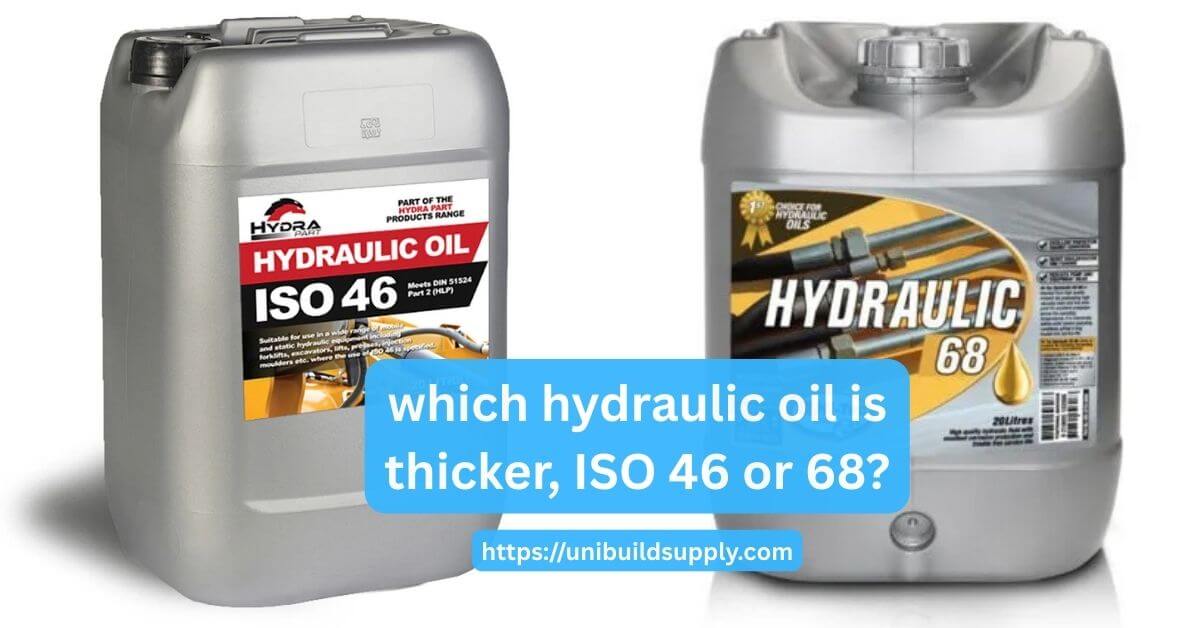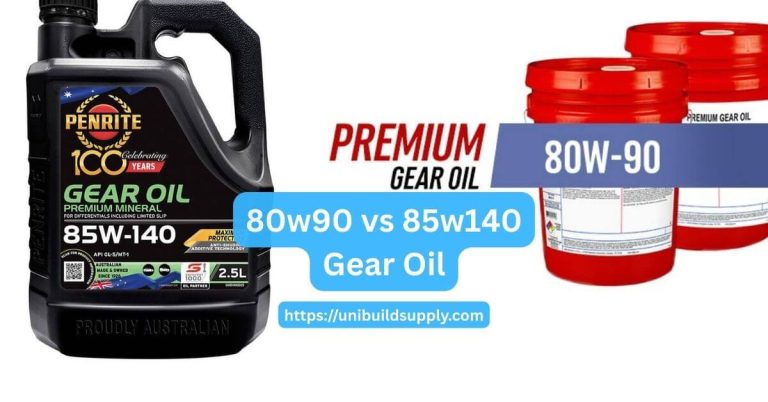Which Hydraulic Oil is Thicker: ISO 46 or ISO 68? (Short, Clear & Practical Guide)
Quick Answer: ISO 68 is thicker than ISO 46. But “thicker” doesn’t always mean “better.” The right choice depends on your machine, climate, and workload — not just the number.
Think of hydraulic oil like blood for your machinery — it powers movement, cools parts, and keeps everything from grinding to dust. But pick the wrong “thickness,” and you risk sluggish performance, overheating, or even costly damage.
The most common confusion? “Is ISO 68 thicker than ISO 46?”
Spoiler: Yes. But here’s what really matters — when to use which.
What Do “ISO 46” and “ISO 68” Actually Mean?
Those numbers aren’t random — they’re part of the ISO Viscosity Grade (VG) system.
- ISO 46 = viscosity of ~46 centistokes (cSt) at 40°C (104°F)
- ISO 68 = viscosity of ~68 cSt at the same temperature
Simple analogy:
Think of ISO 46 like maple syrup. ISO 68? More like cold honey. Same spoon — different pour speed.
Higher number = thicker oil. Simple as that.
Viscosity Showdown: 46 vs 68 hydraulic oil
| Feature | ISO 46 | ISO 68 |
|---|---|---|
| Thickness | Lighter, flows faster | Heavier, flows slower |
| Cold Weather | Starts easier below 10°C | May struggle to pump when cold |
| Hot Conditions | Can thin out too much | Holds up better above 60°C |
| High Pressure | Risk of film breakdown | Better film strength |
| Energy Use | Less drag = better efficiency | Slightly higher pump load |
Key Insight:
It’s not about “which is better” — it’s about matching thickness to your machine’s needs.
What Changes Oil Thickness in Real Life?
That “46” or “68” rating? It’s measured at 40°C. In the real world, oil thickens and thins with:
- Temperature → Cold = thicker. Hot = thinner.
- Pressure → Under extreme pressure, oil can temporarily thicken (called piezo-viscous effect).
- Shear → Fast-moving pumps can “thin” oil temporarily (shear thinning).
- Contamination → Water or dirt messes with flow and protection.
- Age/Oxidation → Old oil thickens and turns acidic — test it before guessing.
- Viscosity Index (VI) → High VI oils (like HV or multigrade) resist thinning when hot. Look for VI > 140 if temps swing wildly.
Where Each Oil Works Best
Use ISO 46 When:
- Operating in cold climates (e.g., outdoor equipment in winter)
- Running mobile machinery — skid steers, backhoes, tractors
- Needing fast response — servo systems, precision valves
- Prioritizing fuel/energy savings
Example: A log splitter used in Michigan winters? ISO 46 keeps things moving.
Use ISO 68 When:
- Running hot, heavy-duty machines — injection molding, presses, crushers
- Operating in warm environments (>30°C / 86°F)
- Equipment is older or worn — thicker oil helps seal gaps
- High-pressure systems — mining gear, industrial cranes
Example: A hydraulic press running 10 hrs/day in Texas? ISO 68 protects bearings under heat and load.
Always check your manual first. Manufacturer specs trump general advice.
Pros & Cons at a Glance
ISO 46
✔️ Faster cold starts
✔️ Better energy efficiency
✔️ Ideal for mobile & precision systems
✖️ Too thin for high-load/high-temp apps
✖️ May accelerate wear if misapplied
ISO 68
✔️ Superior film strength under pressure
✔️ Stays stable at high temps
✔️ Great for industrial/heavy equipment
✖️ Sluggish in cold weather
✖️ Higher pumping resistance = more energy use
How to Pick the Right One (Simple Checklist)
Ask yourself these 4 questions:
- What does my equipment manual say? → Start here. Always.
- What’s my average operating temp?
- Below 10°C? → Lean toward ISO 46
- Above 40°C? → Lean toward ISO 68
- Is my system high-pressure or heavy-load?
- Yes? → ISO 68 usually safer
- Am I chasing efficiency or durability?
- Efficiency → ISO 46
- Longevity under stress → ISO 68
Pro Tip: If temps vary wildly, consider multi-grade or HV (High Viscosity Index) oils — they behave like 46 when cold and 68 when hot.
Conclusion
Yes, ISO 68 is thicker than ISO 46.
But the real question isn’t “Which is thicker?” — it’s “Which is right for MY machine?”
- Cold, fast, efficient? → ISO 46
- Hot, heavy, durable? → ISO 68
Don’t guess. Don’t go by color. Don’t mix grades.
- Check your manual.
- Know your operating temp.
- Match the oil to the job.
Your hydraulic system will thank you — with fewer breakdowns, longer life, and smoother operation.
Frequently Asked Questions (FAQ)
What happens if I use the wrong hydraulic oil viscosity?
Using the wrong oil can cause serious problems.
– Too thin (e.g., using 46 in a hot, high-load system): Can lead to insufficient lubrication, causing accelerated wear on pumps and valves, overheating, and a drop in system pressure.
– Too thick (e.g., using 68 in a cold climate): Can cause sluggish performance, pump cavitation (air bubbles forming from strain), increased energy consumption, and poor cold-weather startups.
Can I mix ISO 46 and ISO 68 hydraulic oil?
No, you should never mix different viscosity grades. While they might be from the same brand, their additive packages can be incompatible. Mixing them can lead to unpredictable performance, additive dropout (sludge formation), and foaming, which can damage your system. If you need to switch, drain the old oil completely before adding the new one.
How often should I change my hydraulic oil?
This depends heavily on the equipment and operating conditions. A general guideline is every 2,000 to 4,000 operating hours. However, the manufacturer’s recommendation is the golden rule. For equipment in harsh, dirty, or high-temperature environments, you may need to change it more frequently. Regular oil analysis is the best way to determine the exact change interval.
What does “Viscosity Index (VI)” mean in simple terms?
Viscosity Index (VI) measures how well an oil resists thinning out as it gets hotter.
– Low VI oil: Gets very thin when hot and very thick when cold.
– High VI oil (HV/multigrade): Maintains a more stable viscosity across a wide range of temperatures. Think of it as an “all-season” hydraulic oil, perfect for outdoor equipment that works in both summer and winter.
Resources:
Keywords: hydraulic oil viscosity, ISO 46 vs 68, which hydraulic oil is thicker, how to choose hydraulic oil, hydraulic oil guide, ISO VG 46, ISO VG 68, hydraulic system maintenance, hydraulic oil selection, industrial lubricants.


